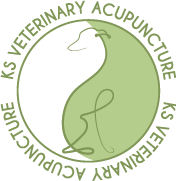
A multi-modal approach to treating dogs and cats with musculoskeletal problems sometimes involves input from a number of different professionals who have different skills. This may include veterinary physiotherapists, osteopaths, chiropractors, hydrotherapists, massage therapists – and of course veterinary acupuncturists – in addition to your normal veterinary surgeon.
Acupuncture in pets can only be performed by a veterinary surgeon. This is different to the situation in humans, where a number of different professionals are able to offer this service. For example, a human physiotherapist can include acupuncture as part of their treatment for a human, but a veterinary physiotherapist cannot perform acupuncture on their animal patients! Veterinary physiotherapists are however highly trained individuals and have many skills that veterinary surgeons do not.
Physiotherapy – for dogs and cats!
Physiotherapy involves restoring a patient’s movement and function following an injury, illness, or trauma. It can also be a useful part of managing a chronic pain condition such as osteoarthritis.
I take my own dogs regularly to see a veterinary physiotherapist. It helps to keep my two ‘oldies’ in good shape and helps to prevent injuries in my younger agility dog.
It is generally well established that physiotherapy has many benefits for dogs, but it is often overlooked in cats. This is due to many factors. Cats do not suffer from as many developmental orthopaedic conditions as dogs. It is also more difficult to identify pain in cats so many conditions are overlooked. Cats also do not generally like being handled or restrained and can become impatient and bored quickly. However, many conditions in cats would benefit from physiotherapy, and techniques and exercises can be adapted so they are suitable for cats.
Physiotherapy techniques:
- Manual therapy – ‘hands on’ techniques to manipulate, mobilise and massage tissues. This helps to relieve pain and stiffness, improve circulation and increase lymphatic drainage.
- Thermal therapy – cold therapy or heat therapy depending on the situation.
- Electro therapy – laser, pulsed electromagnetic field (PEMF) therapy, therapeutic ultrasound.
- Exercise therapy program – land based exercises to help restore function and prevent further injury.
- Hydrotherapy – water based exercise in a pool or underwater treadmill.
Combining physiotherapy techniques alongside other treatments can be very effective at controlling pain as well as improving the animal’s overall musculoskeletal health.
‘Ned’
This is ‘Ned’ who was one of my very first acupuncture patients. Ned was diagnosed very early in life with severe hip dysplasia. Despite this devastating diagnosis, he went on to live a full and happy life until he was 14 years old. This was due to the dedication of his owners who took Ned for regular hydrotherapy, laser therapy, massage and acupuncture treatments, in addition to his regular vet visits. I had the pleasure of treating Ned for many years and I loved being able to help keep this lovely dog comfortable and pain-free.

Please contact us if you would like to find out how a multi-disciplinary team of professionals could help your pet. I can advise you if I think that your pet could benefit from physiotherapy, osteopathy or chiropractic treatment as part of their multimodal management. It may even be that one of these modalities is more appropriate for your pet’s condition than veterinary acupuncture.
When selecting a practitioner it is important that they are suitably qualified and have the experience and competence to treat your pet. The RAMP register is a good place to start and I can also make personal recommendations.
